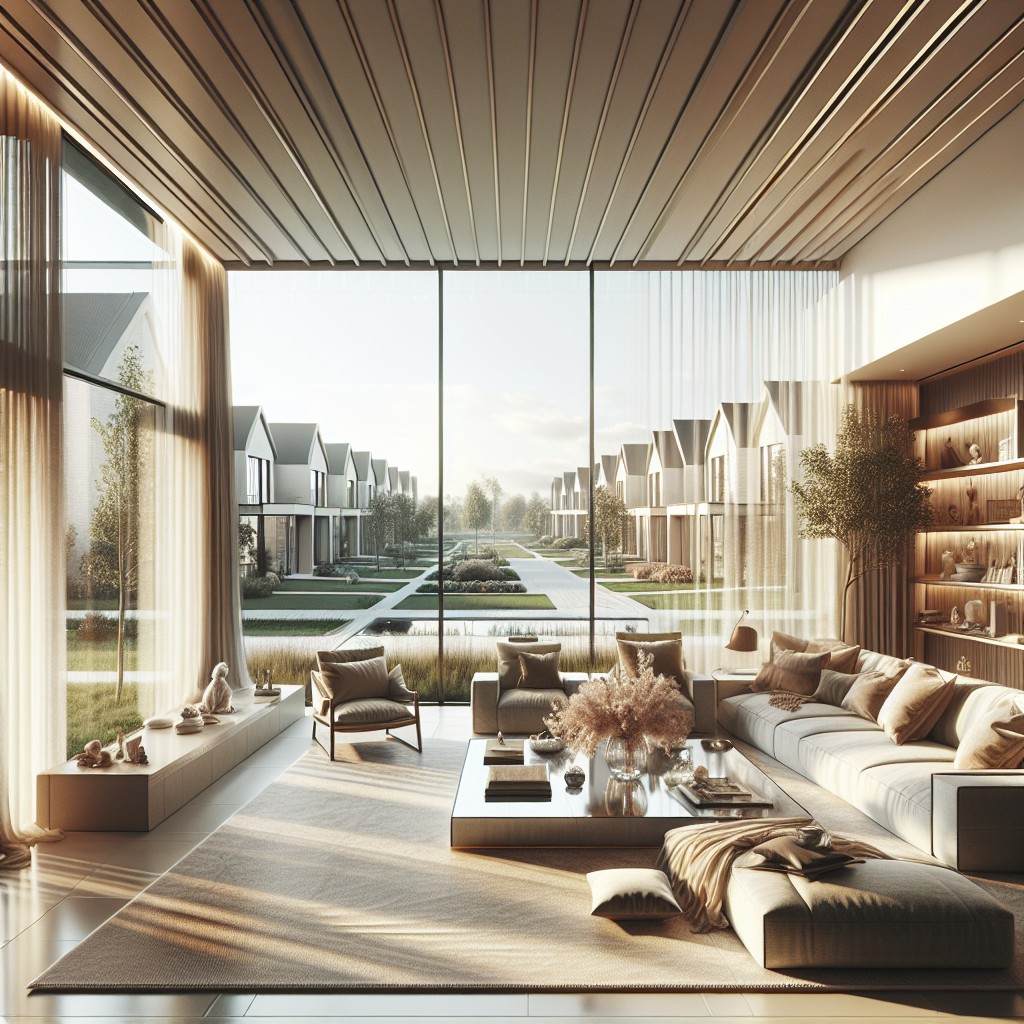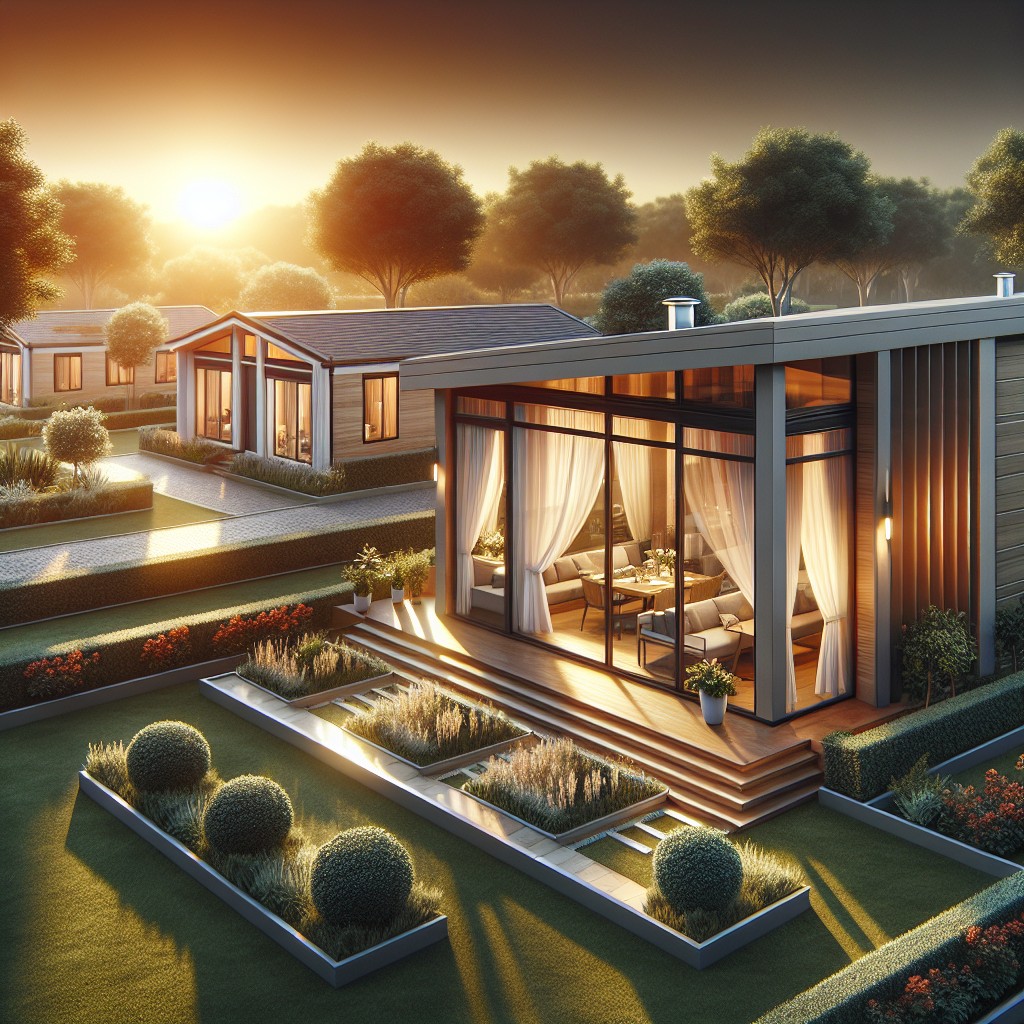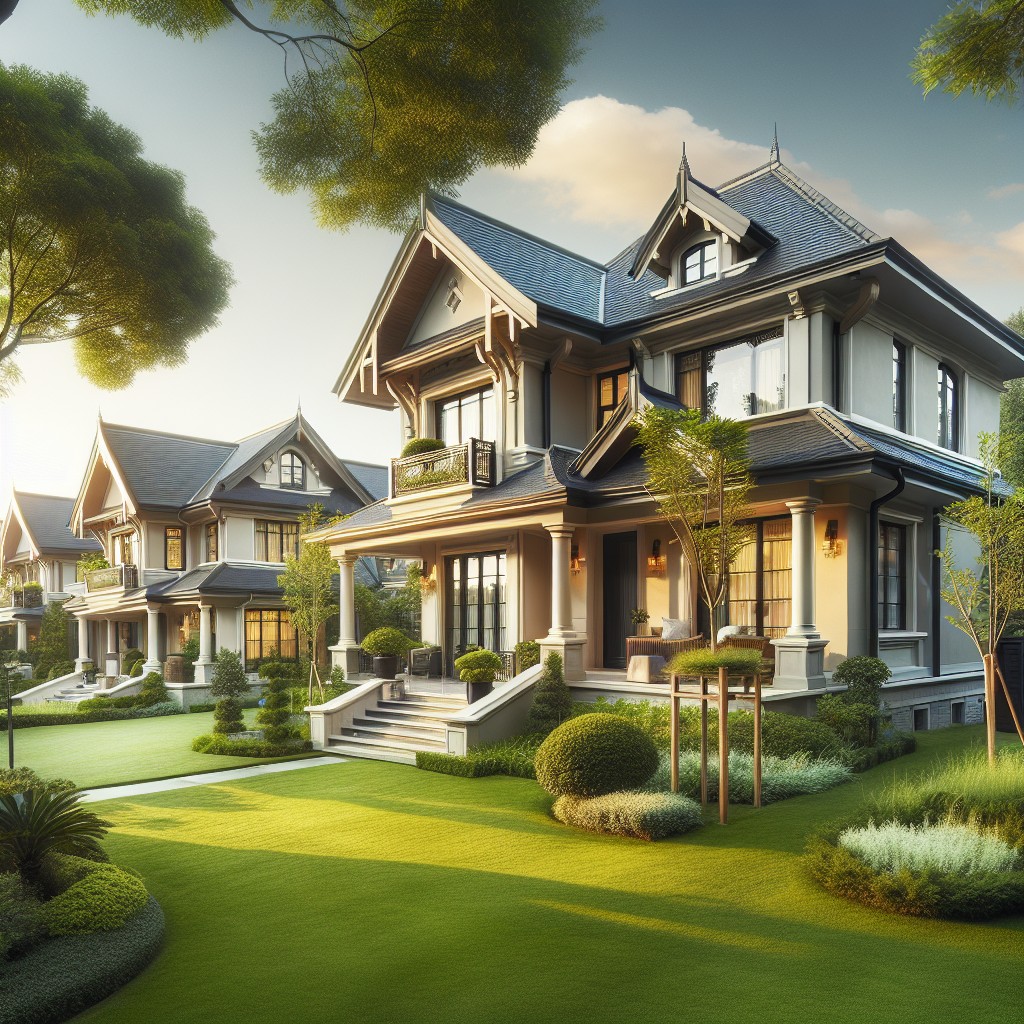Last updated on
Jump into the world of sustainable buildings because understanding the connection between home prices and green living practices can transform your perception of real estate.
As one dives into the domain of sustainable living, Connect homes offer an advanced solution for energy efficiency, and understanding their pricing structure becomes crucial.
This piece offers in-depth insight into the entire cost framework. It covers initial investment, installation expenditures, potential running expenses, and even discusses ways to minimize costs while maximizing benefits.
The estimated all-in cost for these homes ranges from $250 to $400 per square foot, depending on the model. It’s noted that larger homes from Connect Homes are generally less expensive on a per square foot basis compared to smaller homes.
Pricing ranges:
- Connect 2 (1 Bedroom, 1 Bathroom, 640 Square Feet): $247,080
- Connect 3 (2 Bedrooms, 1 Bathroom, 960 Square Feet): $311,140
- Connect 4 (2 Bedrooms, 2 Bathrooms, 1280 Square Feet): $363,840
- Connect 4T (2-3 Bedrooms, 3 Bathrooms, 1280 Square Feet): $381,272
- Connect 4L (3 Bedrooms, 3 Bathrooms, 1600 Square Feet): $480,000
- Connect 5 (2-3 Bedrooms, 2 Bathrooms, 1600 Square Feet): $424,080
- Connect 5L (3 Bedrooms, 2 Bathrooms, 1600 Square Feet): $435,476
- Connect 6 (3 Bedrooms, 2 Bathrooms, 1920 Square Feet): $505,896
- Connect 6T (3 Bedrooms, 3 Bathrooms, 1920 Square Feet): $525,400
- Connect 6L (3 Bedrooms, 2.5 Bathrooms, 1920 Square Feet): $520,400
- Connect 7 (3 Bedrooms, 3 Bathrooms, 2240 Square Feet): $587,712
- Connect 8 (3-4 Bedrooms, 2.5 Bathrooms, 2560 Square Feet): $668,528
- Connect 10 (4 Bedrooms, 2.5 Bathrooms, 3200 Square Feet): $826,160
Key takeaways:
- Modular Pricing model includes off-site construction and inclusive estimates.
- Pre-designed plans offer cost-effective options with predictable outcomes.
- Jurisdictional factors impact home prices, including building codes and zoning laws.
- Connect Homes prioritize energy efficiency and sustainability for long-term savings.
- Consider additional costs such as site work and customization when budgeting.
Understanding Connect Home Pricing: An Overview

Navigating the financial landscape of acquiring a Connect Home involves recognizing several core concepts. First, the price is influenced by design complexity and square footage. Larger, more intricate designs naturally command a higher price tag. Second, the degree of customization can either elevate or maintain costs within manageable bounds. Choosing standard finishes and fixtures can keep expenses predictable. Third, location affects pricing, as transport and installation costs vary by region. Lastly, the price reflects a comprehensive package, usually encompassing design, construction, transport, and assembly. By understanding these factors, buyers can align their budgets with their preferences for a Connect Home.
Connect Homes Cost Breakdown
To dissect the cost elements of Connect Homes, consider the following key components:
- Base Model Price: This includes the standard features and finishes of a chosen model. Think of it as the starting point for your Connect Home.
Site Work and Foundations: Each building site is unique. Costs here cover site preparation, foundation construction, and utility hookups.
Delivery and Installation: These expenses vary based on the distance from the factory to the site and the complexity of installing the home on its foundation.
Additional Features and Customizations: Upgrades in materials or design alterations to match individual preferences influence final pricing.
Soft Costs: Architectural, engineering, permitting, and any other professional services fall under soft costs.
Keep in mind that while these elements contribute to the overall financial commitment, the transparent pricing approach of Connect Homes simplifies the budgeting process, helping you anticipate and plan for each phase of your home-building journey.
Connect Homes Pricing Model Explained
In unravelling the pricing structure of Connect Homes, clarity emerges when considering these core principles:
- Modular Pricing: The cost of Connect Homes includes the off-site construction of modules. This approach favorably reduces waste and streamlines the building process.
- Inclusive Estimates: Quotes typically encompass site work, foundation laying, and the setting of the modules in addition to the unit’s price, ensuring a comprehensive financial picture.
- Scale of Economy: Leveraging mass production techniques, the company passes on savings to the customer, without compromising on quality or design.
- Delivery Considerations: The unique “Connect 5” transportation system calculates delivery fees based on distance, translating into lower and predictable shipping costs.
- Customization Impact: While base prices reflect standard features, customization options are available, impacting overall costs according to selections made.
Always prioritize the resulting value, rather than just the sticker price, because a Connect Home is designed with efficiency, sustainability, and quality at its heart.
Transparent, Predictable Product Pricing
When considering a Connect Home, the predictable product pricing structure is key. Here’s how it simplifies your budgeting:
- Fixed Base Price: Each model comes with a set base cost, which includes standard features and finishes.
- Clear Upgrade Costs: Optional enhancements have defined prices, so you can pick and mix knowing the financial impact.
- No Hidden Fees: From the onset, every potential expense is outlined. You won’t encounter unexpected costs during construction.
- Volume Pricing Advantage: As Connect Homes sources materials in bulk for all projects, savings are passed on to you.
- Locked-in Quotes: Once you sign your contract, the quoted price is locked in, shielding you from market fluctuations during the build phase.
This approach removes the guesswork and gives you control over where your money goes, ensuring a smooth and transparent home buying journey.
Up Front, Transparent Design Fees
When considering Connect Homes as your modular home provider, you’ll encounter a pricing approach that prioritizes clarity from the outset. The design fee, a critical part of the overall expense, isn’t a figure shrouded in mystery but an upfront cost that includes several key services:
- 1. Site evaluation: This involves assessing your land to determine suitability for a Connect Home.
- 2. Preliminary design: Initial drawings and adaptations are made to tailor your chosen floor plan to your needs.
- 3. Permitting assistance: They provide guidance through the often-complex building permit process.
- 4. Fixed pricing: Once the design phase is completed, you receive a solid quote for the construction, ensuring financial predictability.
These transparent fees are designed to eliminate surprises, aiding in budget management and fostering a trust-based client-builder relationship. By understanding these costs early on, you can make well-informed financial decisions, ensuring your home-building journey is as seamless as possible.
Living Homes Cost and Prices Review
With a reputation for eco-friendly construction, Living Homes offers a range of prefabricated options that merge sustainability with modern design. Here’s what to consider when reviewing their costs:
1. Base Price Variability: The initial cost of a Living Home varies significantly based on the model type and size, representing the barebones structure without additional customizations or site work.
2. Standard Features: Their pricing often includes high-quality, sustainable materials and energy-efficient systems, which can drive up the initial investment but pay off in long-term savings.
3. Customizations and Add-Ons: Expect to allocate additional funds for upgrades or custom features, which will increase the total cost beyond the base price.
4. Site Work and Foundation Costs: These necessary expenses are not typically included in the listed prices and can vary widely by location, site condition, and local labor rates.
5. Delivery and Installation: The costs to transport and assemble your home are calculated separately, contingent upon the distance from the factory and the complexity of the installation.
6. Permitting Fees: Local regulations dictate permitting costs, which are the homeowner’s responsibility and are added to the total project budget.
7. Overall Affordability: Despite the higher upfront costs relative to some traditional homes, the investment in a Living Home may balance out through lowered utility bills and reduced maintenance costs over time.
Understanding these cost components is essential when evaluating the financial commitment to a Living Home, enabling a well-informed decision tailored to personal budget and sustainability goals.
Deltec Homes Cost and Prices Insights
Deltec Homes stands out for its unique circular design, offering resistance to extreme weather conditions. When evaluating their cost, several factors come into play:
1. Base Price Variability: Deltec’s prices vary depending on the model and square footage. The base price includes the shell of the home, which is the exterior walls, roof, and floor system.
2. Added Features and Finishes: Customization such as high-end finishes, appliances, fixtures, and additional features can increase the overall cost substantially.
3. Delivery and Assembly: Costs extend beyond the base price, accounting for delivery of the home kit to your site and the cost for assembly, which varies by location.
4. Foundation and Site Work: The price doesn’t include foundational work or additional site-specific preparations, which vary depending on terrain and accessibility.
5. Sustainability Options: Deltec offers energy-efficient upgrades, such as solar panel integration and Energy Star appliances, which can incur higher upfront costs but yield long-term savings.
Remember, a detailed quote from Deltec Homes will give you the most accurate estimate, accounting for all of these variables tailored to your project needs.
Ma Modular Prices and Cost Overview
Ma Modular homes offer a blend of design flexibility and budget-friendliness. Prices for these prefabricated homes start at around $150 per square foot, but this base figure can be influenced by several factors.
Key aspects to consider include:
- Size and Design: Larger models and those with more complex designs will have a higher overall cost.
- Finishing Options: Standard finishes are included in the starting price, but upgrades or premium materials will add to the final cost.
- Site Work: Preparing the land for the modular unit, including foundation work, utility hookups, and landscaping, can significantly affect the total investment.
- Delivery and Installation: The distance from the manufacturing facility to the construction site could vary, influencing the cost for transportation and assembly of the home.
- Additional Costs: Permit fees, architectural services, and potential property taxes need consideration when budgeting for a Ma Modular home.
It’s important to work closely with Ma Modular’s team to get a comprehensive quote catered to your specific needs and location.
Connect One Feature and Price Guide
The Connect One model embodies simplicity and efficiency, crafted for those prioritizing smart use of space without sacrificing design quality. It’s an ideal fit for a compact living situation such as a backyard studio or a remote retreat.
Here’s what you can expect:
- Dimension & Layout: At approximately 460 square feet, this model offers an open-plan studio space with a distinct living area, kitchenette, and a full bathroom.
Pricing Outline: The base price generally includes the prefab structure, key finishes, and essential fixtures. Pricing starts around the mid-$100k range but varies based on selections and site-specific needs.
Upgradable Options: Although compact, the model offers upgrade possibilities including higher-end finishes and smart home features.
Site Prep and Delivery: Costs here are additional and largely determined by location, accessibility, and local regulations.
Sustainability Features: Standard features may include energy-efficient windows and insulation options that align with the brand’s eco-friendly ethos.
Keep in mind, Connect Homes offers a streamlined process from manufacturing to installation, aimed at providing transparency and predictability in pricing throughout your journey to homeownership.
Connect Two Space and Cost Evaluation
For those yearning for a balance between affordability and spacious living, Connect Two strikes a remarkable equilibrium. This model encompasses roughly 1,280 square feet, smartly appropriated to maximize both communal areas and privacy. Two bedrooms and two baths allow for comfortable living, whether for small families or individuals craving extra space. Its sleek design is tailored to not only provide aesthetic appeal but also to enhance functional living.
The financial aspect remains equally appealing. With a price per square foot that competes favorably with traditional on-site construction, this option presents an excellent value proposition. Add to that the reduced time for completion compared to conventional builds, and the potential for cost savings becomes even more pronounced. When considering Connect Two, it’s important to factor in site-specific costs, which can fluctuate based on local regulations, permits, and preparation needs. However, the base price provides a solid foundation for evaluating the overall affordability of this elegantly efficient prefab home.
The Connect Two model embodies a forward-thinking approach to residential construction, where efficiency and price transparency are at the forefront, offering homeowners a clear understanding of their investment from the outset.
Connect Three Investment and Feature Rundown
Investing in a Connect Three model offers a balance of comfort and practicality, making it a popular choice for families and professionals. Here’s what you get with this investment:
- Space Optimization: With a design focus on maximizing functional space, Connect Three allows for comfortable living across its bedrooms, kitchen, and living areas.
- Eco-friendly Features: Standard fixtures include energy-efficient appliances and sustainable materials that reduce your carbon footprint and save on utility expenses.
- Customization Options: While it comes with pre-designed plans, you can tailor finishes and fixtures to your taste and needs, influencing the overall cost.
- Technology Integration: The home is pre-wired for smart home features, bringing you the convenience of modern living.
- Construction Efficiency: Factory precision cuts down build time and minimizes waste, often leading to faster occupancy and cost savings.
The balance of these factors contributes to the holistic value of the Connect Three, delivering a modern, energy-efficient home without an excessive price tag.
Connect Four and Connect 5 Prefab Home Comparison
Choosing between the Connect Four and Connect 5 prefab home models is akin to selecting between premium comfort and grandeur.
Connect Four features a compact footprint with smart design choices optimizing living space, ideal for smaller plots or urban settings, judiciously balancing cost with functionality.
On the other hand, Connect 5 boasts additional square footage, lending itself to an expansive living environment suited for families needing extra room or those desiring more extensive entertaining areas.
This model’s price reflects its larger size and the increased materials required for construction.
Both options present eco-friendly features and modern aesthetics, perfect for sustainable living enthusiasts.
Customization possibilities allow homeowners to tailor their space to specific needs, affecting the final price.
Finishes and fixtures have a direct influence on the final cost, offering a spectrum from basic to high-end.
Budget-conscious buyers can opt for standard amenities, while luxury seekers may choose premium upgrades.
When evaluating Connect Four and Connect 5, consider the long-term value, as the initial investment pays dividends in durability, energy efficiency, and lower maintenance costs.
Remember, the right choice balances personal needs with economic feasibility.
Package Inclusions for Connect Homes Models
When selecting a Connect Homes model, you’re choosing a comprehensive package that sets you up for a streamlined building process. Key inclusions typically encompass:
- Architectural elements: Precise detailing, critical structural components, and design-forward aesthetics form the backbone of your home.
- Core systems: From plumbing and electrical wiring to HVAV systems, essential functions are integrated for immediate livability.
- Interior finishes: This covers flooring, walls, and fixed cabinetry, providing a polished look that aligns with modern standards.
- Exterior finishes: Durable materials designed to withstand environmental stresses while offering a sleek appearance are standard.
- High-quality insulation: Advanced materials ensure efficient thermal performance, reducing energy costs and improving comfort.
- Appliances and fixtures: Eco-conscious and stylish choices for kitchen and bathroom spaces are included to complement the design.
- Windows and doors: Pre-installed high-performance units offer security, energy efficiency, and contribute to the overall aesthetic.
These inclusions are thoughtfully curated to ensure that once your home is assembled, it stands as a testament to both sustainability and design sophistication, without the need for extensive additional investment.
Browse Pre-Designed Plans: Cost Vs. Customization
When selecting a Connect Home, you have the option to choose from pre-designed plans which can streamline the decision-making process and potentially lower your costs. These designs have been optimized for efficiency, sustainability, and comfort—benefits that are reflected in the pricing.
Here’s what you need to know:
- Pre-designed means cost-effective: Because these plans are standardized, the cost of architectural design is distributed over many projects, resulting in lower individual expenses for you.
Speed of construction: With predetermined plans, the construction timeline is often faster, as the builders are familiar with the design and can expedite the process. A quicker build equates to reduced labor costs.
Customization at a premium: While customization is available, altering pre-designed plans can incur additional fees due to the extra design time and the potential need for new engineering assessments.
Predictable outcomes: Sticking to a pre-designed plan means fewer surprises. Materials, finishes, and construction methods are predetermined, leaving little room for unforeseen costs.
Weighing the balance between the affordability of pre-designed plans against the desire for a customized home will guide you towards the best choice for your lifestyle and budget. Remember, even within set designs, there is room to make a space uniquely yours through interior choices and finishes.
Connect Homes Isn’t a Conventional Builder: Price Implications
Connect Homes distinguishes itself from traditional construction companies with its innovative approach to building, which significantly influences pricing. Modular construction techniques used by Connect Homes enable them to offer:
- Streamlined Production: By constructing homes in a controlled factory setting, costs associated with weather delays and onsite labor inefficiencies are reduced.
- Bulk Material Purchasing: This approach allows for the acquisition of building materials in larger quantities at lower prices, a saving that is often passed on to the consumer.
- Design Efficiency: Standardized designs mean reduced architectural costs and a quicker turnaround from planning to construction.
- Transportation and Installation: Their patented modular system is designed for cost-effective transportation and relatively simple installation, mitigating unexpected expenses that typically arise during these stages in traditional homebuilding.
- Energy-Efficient Homes: Connect Homes are built with sustainability in mind, supporting long-term savings through lower utility bills.
The pricing implications of working with Connect Homes are directly tied to their modular, efficient, and predictable construction process, which contrasts with on-site, customized builds that can have variable and sometimes escalating costs.
Products and Prices in the Design Series
Connect Homes Design Series features a range of pre-configured models with set pricing, tailored for various needs and preferences. These models incorporate high-quality materials and finishes, ensuring durability and aesthetic appeal. By choosing a Design Series product, customers benefit from a streamlined selection process and a clear understanding of what their investment entails.
- Fixed Pricing: Each model in the Design Series comes with a fixed price tag, allowing buyers to select a home that fits their budget without concerns about escalating costs during construction.
- Inclusive Features: Prices include standard features such as energy-efficient windows, sustainable insulation, and pre-selected finishes, with the option for upgrades at predetermined costs.
- Varied Footprints: The series offers a range of sizes, from compact studios to spacious multi-bedroom homes, catering to different space requirements without compromising on design integrity.
- Time Savings: Opting for a Design Series model reduces the time spent on design decisions, with the knowledge that each home has been thoughtfully curated by experienced architects.
- Predictable Timeline: With pre-designed options, the production timeline is more predictable, making it easier to plan for move-in dates and manage expectations.
The Design Series demystifies the home building process, aligning product offerings with transparent pricing and a commitment to design excellence.
Understanding the Pro Series Home Pricing
The Pro Series homes by Connect Homes are designed for scalability and efficiency. These models cater to clients interested in developments ranging from small lots to full communities while balancing quality and cost.
Bulk Pricing: For larger projects, the Pro Series offers an economically scaled pricing model, which decreases the cost per unit as the volume of homes increases, providing a value proposition for developers.
Standardized Options: To maintain cost-effectiveness, these homes come with pre-selected design options, finishes, and fixtures, streamlining the process and cutting down on design fees.
Economic Materials: Through selecting materials that provide both durability and aesthetic appeal while keeping an eye on the bottom line, Pro Series homes balance cost without compromising on quality.
Streamlined Construction Process: With a focus on rapid assembly and reduced on-site construction time, Pro Series homes save on labor and time-related costs.
Energy Efficiency: The homes incorporate sustainable features that, while possibly incurring a higher initial cost, lead to long-term utility savings due to energy-efficient design baked into the upfront price.
By considering these factors, potential buyers can anticipate the investment needed for a Pro Series home and the long-term financial benefits it offers.
Jurisdictional Factors and Their Impact On Home Prices
Jurisdictional factors play a critical role in the final cost of a Connect Home. Here is how these regional elements can influence pricing:
1. Building Codes: Each area has specific regulations that can affect construction methods and materials—compliance might necessitate additional expenses.
2. Zoning Laws: Local zoning dictates land use and may limit the type of home you can build, impacting design and potentially cost.
3. Permitting Fees: These vary widely and can add unforeseen costs to your budget depending on municipal structures.
4. Impact Fees: Some localities charge fees to offset the home’s impact on community infrastructure, adding to the total cost.
5. Utility Hookups: The distance from existing utility connections to your home site can significantly affect installation prices.
6. Site Accessibility: Hard-to-reach locations may require special transportation or construction methods, leading to higher costs.
7. Local Labor Rates: The prevailing wage rates for skilled labor in your area will influence the overall pricing of your home.
By familiarizing yourself with these factors, you can better anticipate the financial considerations unique to your location when planning for your Connect Home.
Informed Decisions in Homebuilding: Costs and Resources
Making informed decisions in homebuilding requires understanding the financial and logistical aspects of the process. Key points include:
- 1. Budgeting: Allocate funds wisely by considering all projected expenses, including land purchase, permits, construction costs, and interior finishes.
- 2. Research: Investigate various homebuilding companies, their pricing models, and customer reviews to ensure you get the best value for your investment.
- 3. Planning: Plan for potential overruns and unforeseen costs, incorporating a buffer into your initial budget to cover these possibilities.
- 4. Resources: Utilize tools such as cost calculators, financing options, and pre-approval processes offered by builders to streamline your planning phase.
- 5. Sustainability: Explore energy-efficient features and materials that can save money in the long term, despite a higher upfront cost.
- 6. Site Preparation: Understand that the costs for site preparation can vary significantly based on location, accessibility, and topography.
- 7. Legalities: Familiarize yourself with local building codes and zoning laws to ensure compliance and avoid costly legal obstacles.
By focusing on these critical aspects of homebuilding, you can navigate cost considerations with confidence and optimize your resources throughout the project.
Search By Price: Navigating Modular Home Costs
Navigating modular home costs efficiently can be streamlined by focusing on a budget-oriented search. This approach allows potential homeowners to discover options within their financial comfort zone without the risk of falling in love with designs out of their price range. Here are some actionable steps to guide your search:
- Filter Options by Budget: Many modular home companies offer price filters on their websites. Use these tools to display homes that match your budget.
- Factor in Additional Costs: Remember to consider expenses beyond the base price, such as site preparation, foundation, and utilities connections.
- Look for Package Deals: Some manufacturers bundle services with the home purchase, potentially offering savings compared to sourcing each service separately.
- Explore Financing Options: Many modular home builders have partnerships with financial institutions and can offer tailored financing plans.
- Compare Long-Term Value: A higher upfront cost for a more energy-efficient home could mean lower utility bills, rendering a seemingly expensive option more cost-effective over time.
By honing in on the right price range and accounting for all related costs, you’ll set a realistic framework for your modular home investment.
FAQ
How big are the modules in connect homes?
The modules in Connect Homes typically measure 8 feet wide by 40 feet long, equating to 320 square feet each.
How much does a modular home cost in WI?
The average cost of a modular home in Wisconsin is approximately $108,000.
What are the environmental benefits of modular homes?
Modular homes reduce waste and energy consumption during construction and offer superior insulation, leading to less dependency on heating and cooling systems, thus reducing the carbon footprint.
How does the construction time of modular homes compare to traditional builds?
Modular homes typically have a shorter construction time than traditional builds due to their factory-based, assembly line process.
What are the energy-efficiency features incorporated in connect homes?
Connect homes incorporate energy-efficient features such as solar panels, LED lighting, high-insulation values, energy-efficient appliances, and smart home technology to conserve energy and reduce carbon footprint.
Related reading:
Table of Contents





